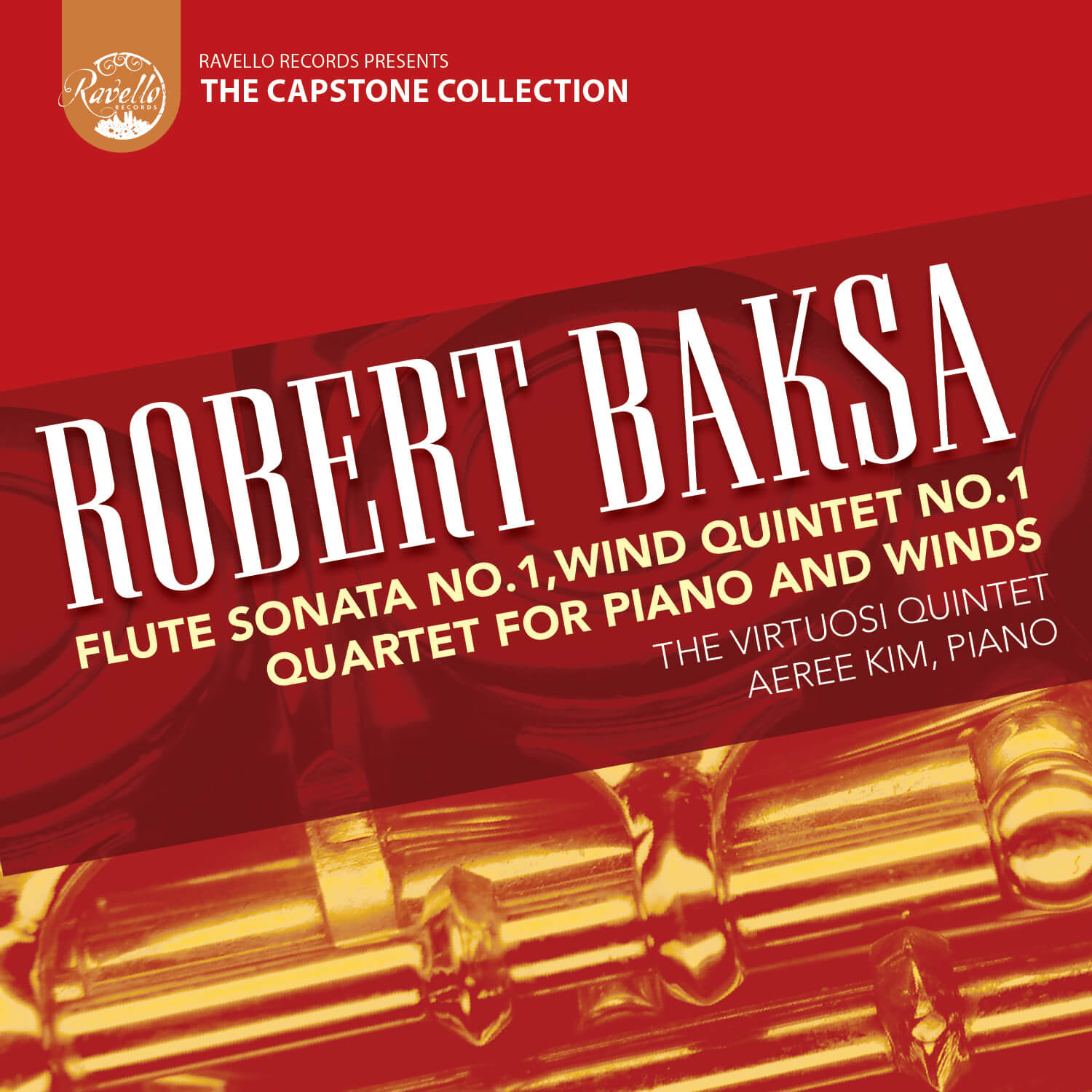
Throughout his career, composer ROBERT BAKSA has steadfastly resisted jumping on the bandwagon of musical fads or academic trends, choosing instead to pursue a personal vision of his own by speaking through a musical voice that combines the linear clarity and architectural shape of the classical era with a distinctly American and contemporary sensibility.
Born of Hungarian parentage in New York City on February 7, 1938, Robert Baksa was raised in Tucson, Arizona. He began piano lessons at the age of six and started composing in his early teens, although he received no formal studies in composition until entering the University of Arizona. Soon after graduating cum laude with a BA in composition, Baksa won a scholarship to Tanglewood and later returned to New York.
A few years after his studies at Tanglewood, it became increasingly clear to him that most of the stylistic innovations of the 20th century were totally at odds with his own artistic ideals. “As important as these methods were to other composers,” Baksa explains, “I found that I could not express my particular personality through their use. The clean lines, transparent textures and sheer clarity of the classical era had the greatest appeal for me, and in spite of what most musicologists say about changing styles, I feel that the best compositions of any era will share, to some extent, these qualities.”
Along with a return to the sense of proportion and structure of the classical era came a reaffirmation of the expressive potential of traditional tonality. “Much of my earlier music had been more dissonant, using a lot of tone clusters. But I began to see that this only served to obscure the shape of the inner voices. So as I began to strive for more structural clarity, those were the first things to be sacrificed. And because the principals of acoustics remained unchanged, I became even more convinced that traditional notions of harn1ony continued to be a valid language for musical expression.”
One of America’s most prolific composers, Baksa has produced over 500 works including songs, choral pieces, keyboard works for both piano and harpsichord, orchestral and chamber music, film scores and two operas. His choral works are perhaps his most widely known compositions-several have sold over I 00,000 copies. His first opera Aria Da Capo, which was premiered at the Lake George Opera Festival, led to a commission by Lincoln Center for the Metropolitan Opera Studio for his second opera, Red Carnations. Both works have had frequent performances, particularly Red Carnations, which is often produced as an introductory opera for young audiences.
Since the early 1970s Baksa ‘s major compositions have been chamber music, stylistically characterized by a balanced mixture of incandescent melodies, perfect structure and transparent textures based on active counterpoint. Eminently accessible to the listener, they exhibit an open and happy personality that at times can become poignantly touching. – Frederick Roffman
Albums
Quartet for Piano and Winds
Catalog Number: RR7831

